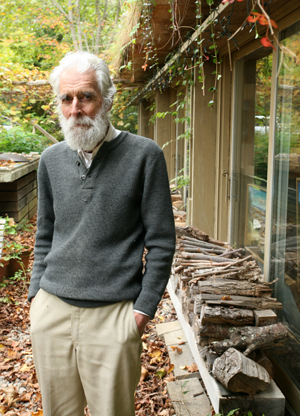
Malcolm Wells, a green design pioneer best known for his underground, or “earth-sheltered,” buildings, passed away on November 27 in Brewster, Massachusetts. He was 83.
Wells grew up in New Jersey and joined the Marines shortly after high school. Though he never received a college degree, he studied engineering at both Georgia Teach and Drexel Institute of Technology, now Drexel University. He went on to work as a draftsman for the electronics company RCA and apprenticed at a small architectural firm in New Jersey. Achieving a perfect score on the state examination, Wells became an architect in 1953.
After designing the RCA pavilion for the 1964 World Fair in New York City, Wells had an epiphany. “After 10 years spent spreading corporate asphalt on America in the name of architecture, I woke up one day to the fact that the earth's surface was made for living plants, not industrial plants,” he wrote in a biography published on his Web site.
From then on, Wells became an advocate for “gentle architecture,” or reducing the impact of buildings on the earth. His mantra was “leave the land no worse than you found it.” Wells understood the value of the earth as natural insulation, calling it “blankets of living land.” He focused on partially or completely subterranean structures and broke the association of such projects to dark caves through the use of well-placed skylights.
Initially, in the 1960s, his plans were not well received. “At the time, green roofs, or any kind of earth on a building, were laughable,” said his son Sam Wells, an architect, in a recent Philadelphia Inquirer story. After Progressive Architecture published an article about his father in February 1965, the magazine was flooded with letters saying he was “crazy.” Nonetheless, Wells continued to pursue his ideas. In 1976, The New York Times called Wells “the leader of the burgeoning underground architecture movement.”
Wells went on to teach environmental design at Harvard and to lecture at architecture schools across the country. He also wrote a number of books that have influenced and continue to influence green builders today.
Though unconventional at the beginning of his career, Wells’ work was a precursor to modern green design. Wells once said, “A building should consume its own waste, maintain itself, match nature's pace, provide wildlife habitat, moderate climate and weather, and be beautiful.” In spite of recent achievements in sustainable design and construction, there is still a long way to go before Wells’ goals are realized.




Post a comment to this article
Report Abusive Comment